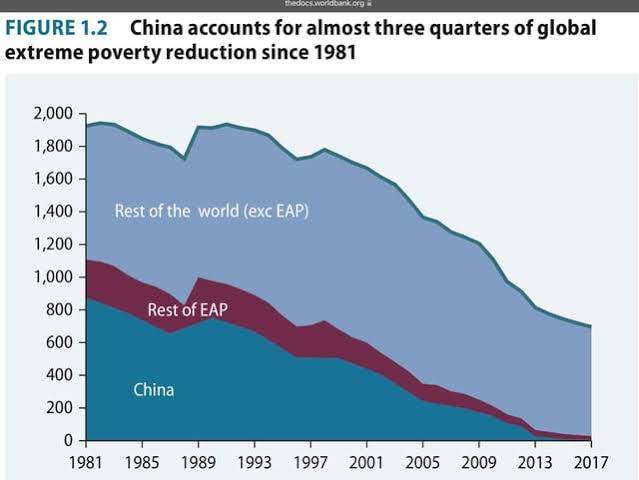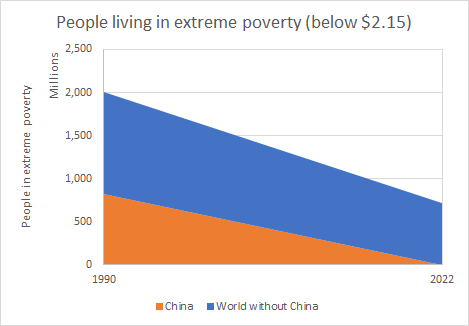I've been wondering if there is a sort of debunk of this popular post from ourworldindata.org: (Was the global decline of extreme poverty only due to China?)[https://ourworldindata.org/data-insights/was-the-global-decline-of-extreme-poverty-only-due-to-china]
Part of the problem is that this article is pretty much zero effort which makes sense since its point is to be disingenuous.
The chart shows the data that answers this question. In red, we see the global decline. In green, we see the decline if we exclude China from the data. In the world outside of China, 29% lived in extreme poverty in 1990 — by 2022, this share was down to 11%.
India's poverty reduction stats are pretty bs. For example, look at this visualisation:

This is "multidimensional" poverty which is the defacto standard for measuring poverty in India right now. According to it, if you are malnourished and physically stunted because of it, you can still be classified as not poor if you have a phone.


